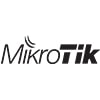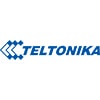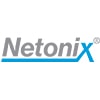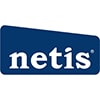TELTONIKA 5G 4G (LTE) Cat.4 Pramoninis Dviejų Modemų Maršrutizatorius su eSIM Palaikymu (RUTM56)
5G (Atsisiuntimas iki 3.4 Gbps) | 4G LTE Cat.4 | 2x SIM lizdai| eSIM | 5x Gigabit LAN Jungtys | Wave-2 802.11ac Dvidažnis WiFi | Load Balancing | GNSS | RMS
Produkto savybės:
RUTM56 yra ateities poreikius atliepiantis dviejų modemų maršrutizatorius, sukurtas sujungti senos ir naujos kartos tinklus. Su 5G ir 4G Cat 4 modemais, jis užtikrina nepertraukiamą veikimą, esant poreikiui prisijungdamas prie 3G ir 2G tinklų. RUTM56 užtikrina didelės spartos, nepertraukiamą ryšį su dviejų SIM ir eSIM palaikymu. Apkrovos balansavimas, Wi-Fi 5 ir penki gigabitinio eterneto prievadai optimizuoja našumą, o RutOS su pramoniniais protokolais ir daugybe VPN pasirinkimų supaprastina IoT sprendimų diegimus. Šis vienas produktas leidžia greitai įdiegti ryšį, išvengiant ilgų konfigūracijų ir rizikų, susijusių su kelių tinklo įrenginių reikalaujančiais sprendimais.
DU MODEMAI
1 x 5G ir 1 x 4G Cat 4 modemai
SIM ir eSIM™
Su automatiniu perjungimu, atsarginiu WAN ryšiu ir kitais perjungimo scenarijais
ILGAAMŽIS SPRENDIMAS
Atgalinis suderinamumas su 3G ir 2G tinklais
PARUOŠTAS NAUDOTI
Lengvas prijungimas ir naudojimas
Produkto specifikacijos:
Mobile
Mobile module:
Modem 1: 5G Sub-6 GHz SA/NSA 2.4/3.4Gbps DL (4x4 MIMO) 900/550Mbps UL (2x2 MIMO); 4G (LTE): DL Cat 19 1.6Gbps (4x4 MIMO)/UL Cat 18 200Mbps; 3G DL 42Mbps UL 5.76Mbps
Modem 2: 4G (LTE) Cat 4 DL 150Mbps UL 50Mbps; 3G DL 21Mbps UL 5.76Mbps; 2G DL 236.8kbps UL 236.8kbps
3GPP Releas:
Modem 1: Release 16
Modem 2: Release 9
eSIM: Consumer type eSIM, profile download and removal operations, up to 7 eSIM profiles; does not include data plans
SIM switch: Allows dual-modem functionality with independent SIM switching for each modem. The SIM switch automatically transitions between the physical SIM and eSIM based on conditions such as weak signal, data limits, roaming, and network issues. Both physical SIMs can operate simultaneously, with switching restricted to each modem's SIM and eSIM (For full failover functionality from 5G to 2G, two SIM cards are required.)
Status: IMSI, ICCID, operator, operator state, data connection state, network type, CA indicator, bandwidth, connected band, signal strength (RSSI), SINR, RSRP, RSRQ, EC/IO, RSCP, data sent/received, LAC, TAC, cell ID, ARFCN, UARFCN, EARFCN, MCC, and MNC
SMS: SMS status, SMS configuration, EMAIL to SMS, SMS to EMAIL, SMS to HTTP, SMS to SMS, scheduled SMS, SMS autoreply, SMPP
USSD: Supports sending and reading Unstructured Supplementary Service Data messages
Block/Allow list: Operator block/allow list (by country or separate operators)
Multiple PDN: Possibility to use different PDNs for multiple network access and services
Band management: Band lock, Used band status display
SIM idle protection service: Provides the possibility to configure the router to periodically switch to the unused SIM card and establish a data connection in order to prevent the SIM card from being blocked
SIM PIN code management: SIM PIN code management enables setting, changing, or disabling the SIM card's PIN
APN: Auto APN
Bridge: Direct connection (bridge) between mobile ISP and device on LAN
Passthrough: Router assigns its mobile WAN IP address to another device on LAN
Framed routing: Framed routing: support an IP network behind 5G UE
Wireless
Wireless mode: 802.11b/g/n/ac Wave 2 (Wi-Fi 5) with data transmission rates up to 867 Mbps (Dual Band, MU-MIMO), 802.11r fast transition, Access Point (AP), Station (STA)
WiFi security: WPA2-Enterprise - PEAP, WPA2-PSK, WPA-EAP, WPA-PSK, WPA3-SAE, WPA3-EAP, OWE; AES-CCMP, TKIP, Auto-cipher modes, client separation, EAP-TLS with PKCS#12 certificates, disable auto-reconnect, 802.11w Protected Management Frames (PMF)
SSID/ESSID: ESSID stealth mode
Wi-Fi users: Up to 150 simultaneous connections
Wireless Connectivity Features: Wireless mesh (802.11s), fast roaming (802.11r), Relayd, BSS transition management (802.11v), radio resource measurement (802.11k)
Wireless MAC filter: Allowlist, blocklist
Wireless QR code generator: Once scanned, a user will automatically enter your network without needing to input login information
TravelMate: Forward Wi-Fi hotspot landing page to a subsequent connected device
Ethernet
WAN: 1 x WAN port 10/100/1000 Mbps, compliance with IEEE 802.3, IEEE 802.3u, 802.3az standards, supports auto MDI/MDIX crossover
LAN: 4 x LAN ports, 10/100/1000 Mbps, compliance with IEEE 802.3, IEEE 802.3u, 802.3az standards, supports auto MDI/MDIX crossover
Network
Routing: Static routing, Dynamic routing (BGP, OSPF v2, RIP v1/v2, EIGRP, NHRP), Policy based routing
Network protocols: TCP, UDP, IPv4, IPv6, ICMP, NTP, DNS, HTTP, HTTPS, SFTP, FTP, SMTP, SSL/TLS, ARP, VRRP, PPP, PPPoE, UPNP, SSH, DHCP, Telnet, SMPP, SNMP, MQTT, Wake On Lan (WOL)
VoIP passthrough support: H.323 and SIP-alg protocol NAT helpers, allowing proper routing of VoIP packets
Connection monitoring: Ping Reboot, Wget Reboot, Periodic Reboot, LCP and ICMP for link inspection
Firewall: Port forward, traffic rules, custom rules, TTL target customisation
Firewall status page: View all your Firewall statistics, rules, and rule counters
Ports management: View device ports, enable and disable each of them, turn auto-configuration on or off, change their transmission speed, and so on
Network topology: Visual representation of your network, showing which devices are connected to which other devices
Hotspot: Captive portal (hotspot), internal/external Radius server, Radius MAC authentication, SMS authorisation, SSO authentication, internal/external landing page, walled garden, user scripts, URL parameters, user groups, individual user or group limitations, user management, 9 default customisable themes and optionality to upload and download customised hotspot themes
DHCP: Static and dynamic IP allocation, DHCP relay, DHCP server configuration, status, static leases: MAC with wildcards
QoS / Smart Queue Management (SQM): Traffic priority queuing by source/destination, service, protocol or port, WMM, 802.11e
DDNS: Supported >25 service providers, others can be configured manually
DNS over HTTPS: DNS over HTTPS proxy enables secure DNS resolution by routing DNS queries over HTTPS
Network backup: Wi-Fi WAN, Mobile, VRRP, Wired options, each of which can be used as an automatic Failover
Load balancing: Balance Internet traffic over multiple WAN connections
SSHFS: Possibility to mount remote file system via SSH protocol
VRF support: Initial virtual routing and forwarding (VRF) support
Traffic Management: Real-time monitoring, wireless signal charts, traffic usage history
Port Mirroring: Mirroring network traffic on Ethernet ports for monitoring and analysis
Security
802.1x: Port-based network access control client
Authentication: Pre-shared key, digital certificates, X.509 certificates, TACACS+, Internal & External RADIUS users authentication, IP & login attempts block, time-based login blocking, built-in random password generator
Firewall: Preconfigured firewall rules can be enabled via WebUI, unlimited firewall configuration via CLI, DMZ, NAT, NAT-T, NAT64
Attack prevention: DDOS prevention (SYN flood protection, SSH attack prevention, HTTP/HTTPS attack prevention), port scan prevention (SYN-FIN, SYN-RST, X-mas, NULL flags, FIN scan attacks)
VLAN: Port and tag-based VLAN separation
Mobile quota control: Custom data limits for SIM card
WEB filter: Blacklist for blocking out unwanted websites, Whitelist for specifying allowed sites only
Access control: Flexible access control of SSH, Web interface, CLI and Telnet
TPM: Identification and authentication module, TPM 2.0 standard
SSL certificate generation: Let's Encrypt and SCEP certificate generation methods
VPN
OpenVPN: Multiple clients and a server can run simultaneously, 27 encryption methods
OpenVPN Encryption: DES-CBC 64, RC2-CBC 128, DES-EDE-CBC 128, DES-EDE3-CBC 192, DESX-CBC 192, BF-CBC 128, RC2-40-CBC 40, CAST5-CBC 128, RC2-64-CBC 64, AES-128-CBC 128, AES-128-CFB 128, AES-128-CFB1 128, AES-128-CFB8 128, AES-128-OFB 128, AES-128-GCM 128, AES-192-CFB 192, AES-192-CFB1 192, AES-192-CFB8 192, AES-192-OFB 192, AES-192-CBC 192, AES-192-GCM 192, AES-256-GCM 256, AES-256-CFB 256, AES-256-CFB1 256, AES-256-CFB8 256, AES-256-OFB 256, AES-256-CBC 256
IPsec: XFRM, IKEv1, IKEv2, with 14 encryption methods for IPsec (3DES, DES, AES128, AES192, AES256, AES128GCM8, AES192GCM8, AES256GCM8, AES128GCM12, AES192GCM12, AES256GCM12, AES128GCM16, AES192GCM16, AES256GCM16)
GRE: GRE tunnel, GRE tunnel over IPsec support
PPTP, L2TP: Client/Server instances can run simultaneously, L2TPv3, L2TP over IPsec support
Stunnel: Proxy designed to add TLS encryption functionality to existing clients and servers without any changes in the program’s code
DMVPN: Method of building scalable IPsec VPNs, Phase 2 and Phase 3 and Dual Hub support
SSTP: SSTP client instance support
ZeroTier: ZeroTier VPN client support
WireGuard: WireGuard VPN client and server support
Tinc: Tinc offers encryption, authentication and compression in it's tunnels. Client and server support.
Tailscale: Tailscale offers speed, stability, and simplicity over traditional VPNs. Encrypted point-to-point connections using the open source WireGuard protocol
OPC UA
Supported modes: Client, Server
Supported connection types: TCP
MODBUS
Supported modes: Server, Client
Supported connection types: TCP
Custom registers: MODBUS TCP custom register block requests, which read/write to a file inside the router, and can be used to extend MODBUS TCP Client functionality
Supported data formats: 8-bit: INT, UINT; 16-bit: INT, UINT (MSB or LSB first); 32-bit: float, INT, UINT (ABCD (big-endian), DCBA (little-endian), CDAB, BADC), HEX, ASCII
DATA TO SERVER
Protocol: HTTP(S), MQTT, Azure MQTT
Data to server: Extract parameters from multiple sources and different protocols, and send them all to a single server; Custom LUA scripting, allowing scripts to utilize the router's Data to server feature
MQTT Gateway
Modbus MQTT Gateway: Allows sending commands and receiving data from MODBUS Server through MQTT broker
DNP3
Supported modes: DNP3 Station, DNP3 Outstation
Supported connection: TCP
DLMS/COSEM
DLMS Support: DLMS - standard protocol for utility meter data exchange
Supported modes: Client
Supported connection types: TCP
API
Teltonika Networks Web API (beta) support: Expand your device's possibilities by using a set of configurable API endpoints to retrieve or change data. For more information, please refer to this documentation: https://developers.teltonika-networks.com
Monitoring & Management
WEB UI: HTTP/HTTPS, status, configuration, FW update, CLI, troubleshoot, multiple event log servers, firmware update availability notifications, event log, system log, kernel log, Internet status
FOTA: Firmware update from server, automatic notification
SSH: SSH (v1, v2)
SMS: SMS status, SMS configuration
Call: Reboot, Status, Mobile data on/off, Output on/off, answer/hang-up with a timer, Wi-Fi on/off
Email: Receive email message status alerts of various services
TR-069: OpenACS, EasyCwmp, ACSLite, tGem, LibreACS, GenieACS, FreeACS, LibCWMP, Friendly tech, AVSystem
MQTT: MQTT Broker, MQTT publisher
SNMP: SNMP (v1, v2, v3), SNMP Trap, Brute force protection
JSON-RPC: Management API over HTTP/HTTPS
MODBUS: MODBUS TCP status/control
RMS: Teltonika Remote Management System (RMS)
IoT Platforms
ThingWorx: Allows monitoring of: WAN Type, WAN IP, Mobile Operator Name, Mobile Signal Strength, Mobile Network Type
Cumulocity - Cloud of Things: Allows monitoring of: Device Model, Revision and Serial Number, WAN Type and IP, Mobile Cell ID, ICCID, IMEI, Connection Type, Operator, Signal Strength. Has reboot and firmware upgrade actions
Azure IoT Hub: Can be configured with Data to Server to send all the available parameters to the cloud. Has Direct method support which allows to execute RutOS API calls on the IoT Hub. Also has Plug and Play integration with Device Provisioning Service that allows zero-touch device provisioning to IoT Hubs
AWS IoT Core: Utility to interact with the AWS cloud platform. Jobs Support: Call the device's API using AWS Jobs functionality
System Characteristics
CPU: MediaTek, Dual-Core, 880 MHz, MIPS1004Kc
RAM: 256 MB, DDR3
FLASH storage: 16 MB serial NOR flash, 256 MB serial NAND flash
Firmware / Configuration
WEB UI: Update FW from file, check FW on server, configuration profiles, configuration backup
FOTA: Update FW
RMS: Update FW/configuration for multiple devices at once
Keep settings: Update FW without losing current configuration
Factory settings reset: A full factory reset restores all system settings, including the IP address, PIN, and user data to the default manufacturer's configuration
Firmware Customisation
Operating system: RutOS (OpenWrt based Linux OS)
Supported languages: Busybox shell, Lua, C, C++
Development tools: SDK package with build environment provided
GPL customization: You can create your own custom, branded firmware and web page application by changing colours, logos, and other elements in our firmware to fit your or your clients’ needs
Package Manager: The Package Manager is a service used to install additional software on the device
Location Tracking
GNSS: GPS, GLONASS, BeiDou, Galileo and QZSS
Coordinates: GNSS coordinates via WebUI, SMS, TAVL, RMS
NMEA: NMEA 0183
NTRIP: NTRIP protocol (Networked Transport of RTCM via Internet Protocol)
Server software: Supported server software TAVL, RMS
Geofencing: Configurable multiple geofence zones
Input / Output
Input: 1 x Digital Input, 0 - 6 V detected as logic low, 8 - 50 V detected as logic high
Output: 1 x Digital Output, Open collector output, max output 50 V, 300 mA
Events: Email, RMS, SMS
I/O juggler: Allows to set certain I/O conditions to initiate event
Power
Connector: 4-pin industrial DC power socket
Input voltage range: 9 – 50 VDC, reverse polarity protection, surge protection >51 VDC 10us max
PoE (passive): Possibility to power up through LAN1 port, not compatible with IEEE802.3af, 802.3at and 802.3bt standards, Mode B, 9 - 50 VDC
Power consumption: Idle: < 4.5 W, Max: < 12.5 W
Physical Interfaces
Ethernet: 5 x RJ45 ports, 10/100/1000 Mbps
I/O’s: 1 x Digital Input, 1 x Digital Output on 4-pin power connector
Status LEDs: 4 x WAN type, 6 x Mobile connection type, 6 x Mobile connection strength, 10 x LAN status, 1 x Power, 2 x 2.4G and 5G Wi-Fi
SIM: 2 x SIM slots (Mini SIM – 2FF), 1.8 V/3 V
Power: 1 x 4-pin power connector
Antennas: 6 x SMA for Mobile, 2 x RP-SMA for Wi-Fi, 1 x SMA for GNNS
Reset: Reboot/User default reset/Factory reset button
Other: 1 x Grounding screw
Physical Specification
Casing material: Anodized aluminum housing and panels
Dimensions (W x H x D): 132 x 44.2 x 95 mm
Weight: 515 g
Mounting options: DIN rail, wall mount, flat surface (all require additional kit)
Operating Environment
Operating temperature: -40 °C to 75 °C
Operating humidity: 10% to 90% non-condensing
Ingress Protection Rating: IP30
Regulatory & Type Approvals
Regulatory: CE, UKCA, EAC, EUCRF, WEEE
Standard package:
- RUTM56 Router
- 24 W PSU
- 6 x 5G Mobile antennas (magnetic mount, SMA male)
- 2 x Wi-Fi antennas (magnetic mount, RP-SMA male, 1.5 m cable)
- 1 x GNSS antenna (adhesive, SMA male, 3 m cable)
- Ethernet cable (1.5 m)
- SIM Adapter kit
- QSG (Quick Start Guide)
- Packaging box




















